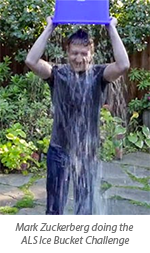This article is part of a series titled “Lessons from the Biz World” where we explore valuable aspects of the for-profit sector that can be applied to nonprofit management and translate into a more efficient, stable and successful organization with a greater impact.
Some organizations spend millions of dollars building their brand and keep their key messages visible among target audiences. This includes companies like Coca-Cola and Walmart, as well as nonprofits like Susan G. Komen for the Cure.
While your nonprofit may not have that kind of budget, there are still plenty of ways to develop brand reputation and marketing messages. After all, if people don’t know who you are, what you do and why they should care, they are going to donate elsewhere.
Contributors
Lessons from the Biz World
For-profit business practices offer many valuable lessons that can be applied to nonprofit management. In this series we look at how these can translate into a more efficient, stable and successful organization with a greater impact.
Lesson 1: Manage capital wisely
Lesson 2: Invest in good people
Lesson 3: Track & measure EVERYTHING
Lesson 4: Utilize branding strategies
Lesson 5: Manage your donor base like customers
Lesson 6: Overhead is not negative
Lesson 7: Embrace resistance
“Fortunately, we have a board of directors with individuals who have created very successful companies because they understand the value and the necessity of branding in their communications and public relations,” says Carlos Leija, the Chief Development Officer for Orangewood Children’s Foundation. “It’s vital to make that kind of an investment in your website, social media, your logo and even your color standards.”
Strong Web Presence
Website
Start by having a strong Web-based presence. A compelling and easy-to-navigate website makes it simple for people to learn more about the cause and how donated funds are used. A good website will trigger an emotional response that makes the visitor or someone want to learn more, get involved and/or donate.
Always have a prominent donation button on Web pages. Online donations are trending upward and you want to make it as easy as possible for people to donate the moment they feel compelled to do so.
{{cta(‘3cfb91da-a8b8-4b2c-9ae2-4165a8ecd4ce’)}}
Social Media

For-profit businesses often have an employee (or team of employees for larger organizations) dedicated to brand development; this person monitors online outreach and communication and is your main brand ambassador. Nonprofits should consider having someone in this same role.
{{cta(‘4093d0c4-4ba9-4819-b1c8-324ee6a58931’)}}
Large nonprofits may have a social media manager whose job is focused on all things related to social media. Other organizations, both big and small, assign the role of managing social media to the marketing or public relations teams. Time dedicated to social media will vary depending on the activity of your online audience and the size of the nonprofit. In general, try to respond to social media posts within 24 hours and post active content on each platform a minimum of once a week. If you can post daily, even better.
Consistent Messaging
Refreshing Your Brand
Developing a consistent message is at the core of a creating a reputable brand, but this can be difficult to maintain in a world where limitless communication is constantly evolving the conversation. Every few years, schedule a roundtable with your board of directors to discuss how your nonprofit’s brand fits into the bigger picture of who or what you are trying to have and impact on.
“Orangewood Children’s Foundation is going through a refresh because there’s been so much that’s changed in foster care – such as where foster youths come from, where they end up and how the system is dealing with them. The message today is so different than it was 6-7 years ago,” Leija explains, “We’re taking a step back to do a full assessment of how we market and communicate to our constituents, our clients, to the people who interface with our clients, to the social workers, to the community, etc. We know it’s going to require a significant investment that we need to put into our budget, but you can’t not do it.”
Community Outreach
Your nonprofit message becomes especially important when you step into the community. It help build deeper relationships with the nonprofit’s target demographics and keep a positive presence in the community. Participate in community outreach by being active in special events, and consider becoming a sponsor when a partnership makes sense.
For example, participate in a parade in the city where your organization is headquartered or sponsor a community educational event where you know important politicians will be present. These types of activities are great ways to build visibility and attract interest.
Advertising
Advertising is another effective branding strategy used by for-profit businesses to grow and influence consumer-spending habits. That’s why it’s critical to promote the big-picture benefits by advertising all of the good things your charity does – sometimes that requires paying for TV ads, direct-mail campaigns, radio spots, etc.
If advertising is the right course for your nonprofit, be sure to research which media channels are most likely to reach your target markets and test key messages to see what resonates best with potential donors.
{{cta(‘70303034-3d35-4d97-a895-47e5f05b5fb7’)}}





